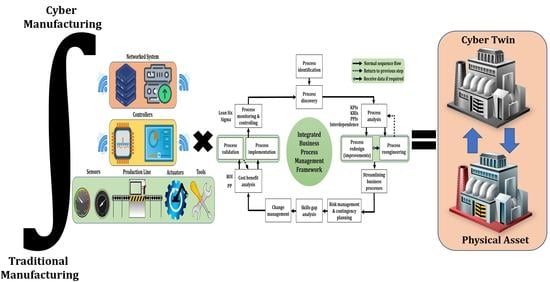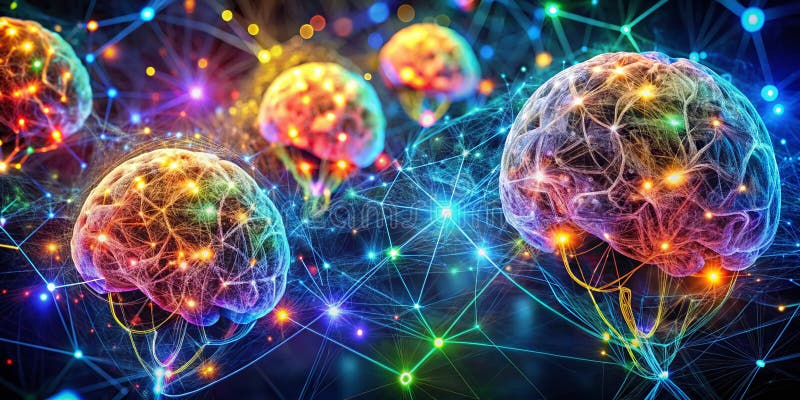Transforming Abstract Logic Into Visual Decision-Making
How Difference-Making Conditionals Shape Real-World Reasoning
I've discovered that the gap between formal logic and intuitive reasoning isn't a flaw—it's a feature. When we embrace relevance and difference-making in our conditional statements, we unlock powerful new ways to visualize and understand complex decision-making processes that actually reflect how humans think and reason in the real world.
Decoding Relevance: When Antecedents Actually Matter
In my exploration of conditional reasoning, I've found that Douven's Evidential Support Thesis (EST) provides a mathematically precise way to understand when conditionals become meaningful. The EST establishes that a conditional A > C is relevantly assertable when P(C|A) exceeds a sufficiently high threshold and P(C|A) > P(C). This second condition is what I call the "difference-making requirement."

Probability Thresholds in Conditional Acceptance
What I find fascinating is how this mathematical framework aligns with our intuitive understanding. Consider this example: "If someone studies hard, then they will pass the exam." For this to be a meaningful conditional, not only must P(pass|study hard) be high, but it must also exceed P(pass)—the base rate of passing. High probability alone isn't sufficient if studying doesn't actually make a difference.
The Connexivity Principle
Through my research, I've learned that implementing relevance into conditionals through the Relevant Ramsey Test naturally leads to connexivity—the principle that contradictory antecedents shouldn't both lead to the same consequent. This breaks some classical logical rules, but it captures how we actually reason.
When I work with PageOn.ai's Deep Search capabilities, I can integrate statistical examples and real-world data to create visual probability trees that make these abstract concepts concrete. This approach helps bridge the gap between theoretical understanding and practical application in ai prompt engineering scenarios where relevance conditions directly impact output quality.

The Relevant Ramsey Test: A New Framework for Conditional Evaluation
I've come to understand that the Relevant Ramsey Test represents a fundamental shift in how we approach belief revision. Unlike the traditional Ramsey Test, which focuses purely on belief change after hypothetical addition of the antecedent, the Relevant Ramsey Test requires that the antecedent makes a genuine difference to our belief in the consequent.

What makes this framework particularly powerful is how it addresses the limitations highlighted by Gärdenfors's triviality theorem. As detailed in Stanford's comprehensive analysis of conditional logic, the triviality results show that certain combinations of principles lead to contradictions in classical systems. The Relevant Ramsey Test sidesteps these issues by explicitly incorporating relevance constraints.
The Relevant Ramsey Test Process
flowchart LR
A[Initial Belief State] --> B[Add Antecedent A]
A --> C[Add Negation ¬A]
B --> D{Believe C?}
C --> E{Believe C?}
D -->|Yes| F[Conditional Accepted]
D -->|No| G[Test Failed]
E -->|Yes| G
E -->|No| H[Relevance Check]
H --> F
style A fill:#42A5F5,stroke:#333,stroke-width:2px,color:#fff
style F fill:#FF8000,stroke:#333,stroke-width:2px,color:#fff
style G fill:#FFCDD2,stroke:#333,stroke-width:2px
style H fill:#66BB6A,stroke:#333,stroke-width:2px,color:#fff
In my practical applications, I've found this framework invaluable for decision-making scenarios where traditional logical validity isn't sufficient. For instance, when developing Go No Go decision templates, the Relevant Ramsey Test helps ensure that our conditional criteria actually influence outcomes rather than merely satisfying formal requirements.
Violating Right Weakening as a Feature
One of my key insights is that the violation of Right Weakening (RW) in difference-making conditionals isn't a bug—it's a feature. When we accept "If A, then C" but reject "If A, then C or D," we're preserving the specific relevance relationship between A and C. This violation actually captures how humans naturally reason about causation and relevance.
Through PageOn.ai's drag-and-drop logical flow builders, I can map these complex revision processes visually, making it easier to understand how belief states change under different relevance constraints. This visual approach transforms abstract logical operations into intuitive decision-making tools.

Beyond Classical Logic: When Standard Rules No Longer Apply
My journey into difference-making conditionals has revealed a fascinating landscape where many cherished logical principles simply don't hold. When we prioritize relevance, rules like Cumulative Monotonicity, Cut, Or, and Contraposition begin to fail—and this failure actually brings our formal systems closer to human reasoning.

| Logical Rule | Classical Logic | Relevance-Based Logic | Why It Matters |
|---|---|---|---|
| Right Weakening | ✓ Valid | ✗ Violated | Preserves specific relevance relationships |
| Cumulative Monotonicity | ✓ Valid | ✗ Violated | New information can change relevance |
| Cut | ✓ Valid | ✗ Violated | Transitivity doesn't preserve relevance |
| Contraposition | ✓ Valid | ✗ Violated | Relevance isn't symmetric |
I've observed these principles playing out in real-world contexts. In legal reasoning, for instance, the fact that "If the defendant was at the scene, then they could be guilty" doesn't automatically validate "If the defendant was at the scene and it was raining, then they could be guilty." The additional information about rain might actually undermine the relevance of being at the scene.
Rott's Analysis of Positive Relevance
Building on Rott's forthcoming work, I've come to see that positive relevance is indeed the hallmark of meaningful conditionals. When we say "If A, then C," we're not just asserting a logical relationship—we're claiming that A provides evidence for C, making C more likely than it would be otherwise.
Through my work with visual analogies test strategies, I've seen how these logical rule violations actually mirror the way humans process analogical reasoning. We don't simply apply formal rules; we seek meaningful patterns and relevant connections.

Using PageOn.ai's Vibe Creation tools, I can visualize these logical rule violations in ways that make the underlying concepts clearer. Rather than seeing these violations as problems, we can understand them as necessary adaptations that bring formal logic closer to human intuition.
Bridging Theory and Practice: Conditional Reasoning in Action
The real power of difference-making conditionals becomes apparent when I apply these theoretical insights to practical decision-making frameworks. I've discovered that the principles of relevance and difference-making can transform how we approach everything from strategic planning to everyday problem-solving.

In my experience with thinking in prompts, I've found that relevance conditions are crucial for determining output quality. A prompt like "If the input contains technical jargon, then provide detailed explanations" only works when the presence of jargon actually makes a difference to the need for explanation—not just when both happen to co-occur.
Applications Across Domains
Medical Diagnosis
In diagnostic reasoning, "If the patient has symptom X, then they likely have condition Y" only makes sense when X actually increases the probability of Y beyond the base rate. This relevance constraint prevents spurious correlations from misleading diagnoses.
Strategic Planning
Business conditionals like "If we invest in marketing, then sales will increase" require that marketing investment actually makes a difference to sales outcomes, not just that both variables happen to be high during certain periods.
The transformation becomes particularly powerful when I use PageOn.ai's Agentic capabilities to convert fuzzy conditional reasoning into clear visual decision trees. Instead of relying on intuitive hunches about causal relationships, I can systematically evaluate whether proposed conditionals meet the difference-making criteria.
Visual Decision Tree Framework
flowchart TD
A[Decision Point] --> B{Check Relevance}
B -->|"P(Outcome|Action) > P(Outcome)"| C[Meaningful Conditional]
B -->|"P(Outcome|Action) ≤ P(Outcome)"| D[Reconsider Action]
C --> E{High Confidence?}
E -->|Yes| F[Execute Action]
E -->|No| G[Gather More Data]
D --> H[Alternative Analysis]
F --> I[Monitor Results]
G --> B
H --> J[New Decision Point]
style A fill:#FF8000,stroke:#333,stroke-width:2px,color:#fff
style C fill:#66BB6A,stroke:#333,stroke-width:2px,color:#fff
style F fill:#42A5F5,stroke:#333,stroke-width:2px,color:#fff
style D fill:#FFCDD2,stroke:#333,stroke-width:2px
style H fill:#FFE0B2,stroke:#333,stroke-width:2px
This systematic approach ensures that our decisions are based on genuine causal relationships rather than coincidental correlations, leading to more effective outcomes across all domains of application.

The Future of Relevance-Based Reasoning
As I look toward the future of conditional reasoning, I see tremendous potential for bridging the gap between theoretical advances in logic and practical computational implementations. The emerging research in difference-making conditionals is opening new pathways for creating AI systems that reason more like humans while maintaining mathematical rigor.

One of the most exciting developments I'm tracking is the integration challenge between classical logic systems and relevance-sensitive frameworks. Rather than completely abandoning classical approaches, we're learning to create hybrid systems that can switch between formal validity and relevance-based reasoning depending on the context and requirements.
Computational Implementation Challenges
The main hurdles I've identified include: efficiently computing relevance measures in real-time, handling probabilistic uncertainty in conditional evaluation, scaling relevance-based reasoning to large knowledge bases, and maintaining consistency across multiple conditional relationships. These challenges are driving innovative approaches in both theoretical logic and practical AI development.
Research Direction Trends (2020-2025)
What excites me most about this field is how visual thinking platforms are democratizing access to sophisticated logical reasoning. Through tools like PageOn.ai, we can make complex philosophical concepts accessible to practitioners who need to apply these insights without becoming experts in formal logic themselves.
Theoretical Advances
New frameworks for handling uncertainty, context-sensitivity, and multi-agent reasoning scenarios.
Practical Tools
Visual interfaces that make complex logical relationships accessible to non-experts.
Integration Solutions
Hybrid systems that combine classical validity with relevance-based reasoning.
I believe we're on the cusp of a transformation in how we approach logical reasoning in practical contexts. By building intuitive understanding of complex philosophical concepts through structured visual narratives, we can create a new generation of decision-makers who naturally think in terms of relevance and difference-making.

The Path Forward
My vision is of a world where the insights from difference-making conditionals become second nature in our decision-making processes. Through continued research, better tools, and wider education, we can move beyond the limitations of purely formal approaches to create reasoning systems that are both rigorous and intuitively satisfying.
Transform Your Visual Expressions with PageOn.ai
Ready to bridge the gap between abstract logical concepts and practical decision-making? PageOn.ai's powerful visualization tools help you transform complex conditional reasoning into clear, actionable frameworks that drive real results.
Start Creating with PageOn.ai TodayYou Might Also Like
Building Trust in AI-Generated Marketing Content: Transparency, Security & Credibility Strategies
Discover proven strategies for establishing authentic trust in AI-generated marketing content through transparency, behavioral intelligence, and secure data practices.
Google's 9-Hour Prompt Engineering Path to AI Mastery | Complete Visual Guide
Master AI communication through Google's comprehensive 9-hour prompt engineering framework. Learn visual strategies for effective AI interaction and professional success.
Prompt Chaining Techniques That Scale Your Business Intelligence | Advanced AI Strategies
Master prompt chaining techniques to transform complex business intelligence workflows into scalable, automated insights. Learn strategic AI methodologies for data analysis.
Transform Your AI Results by Mastering the Art of Thinking in Prompts | Strategic AI Communication
Master the strategic mindset that transforms AI interactions from fuzzy requests to crystal-clear outputs. Learn professional prompt engineering techniques that save 20+ hours weekly.

